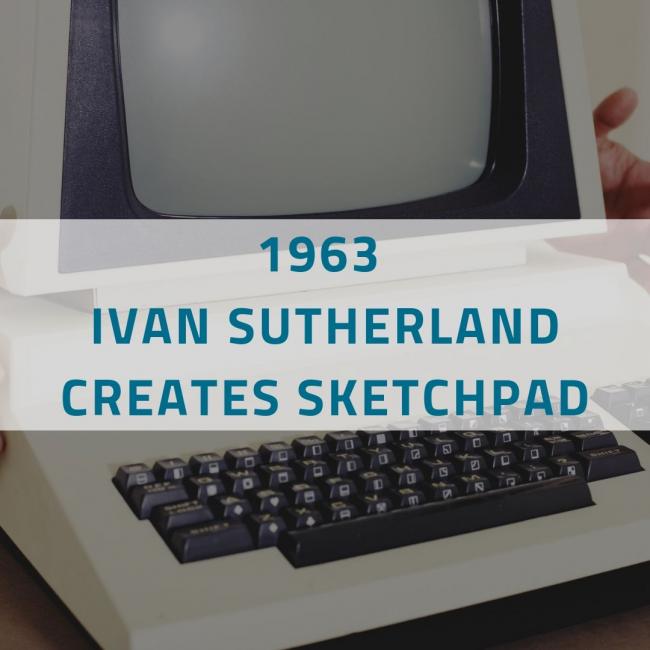The Origins of 3d Modeling and Its Place Through the Ages
 1963 – Ivan Sutherland Creates Sketchpad
As part of his doctoral thesis, Ivan Sutherland presented a fundamental shift in 3D modeling potential from tumultuous pen and paper undertakings. It marked the first time an operator could accurately draw out 3D shapes on a computer screen through the use of a light pen; establishing markedly improved efficiency when amending existing drawings or when producing several drawings that are repetitive in nature (as found in a technical report produced from his Sketchpad presentation).
Nonetheless, major limitations stood in the way from the commercialization of this advancement as Sketchpad was not able to operate on any other machine other than the one Sutherland had specifically designed it around.
1963 – Ivan Sutherland Creates Sketchpad
As part of his doctoral thesis, Ivan Sutherland presented a fundamental shift in 3D modeling potential from tumultuous pen and paper undertakings. It marked the first time an operator could accurately draw out 3D shapes on a computer screen through the use of a light pen; establishing markedly improved efficiency when amending existing drawings or when producing several drawings that are repetitive in nature (as found in a technical report produced from his Sketchpad presentation).
Nonetheless, major limitations stood in the way from the commercialization of this advancement as Sketchpad was not able to operate on any other machine other than the one Sutherland had specifically designed it around.

The Investments of the 1970s
Commercial viability had become the most obvious stepping stone in order to open up scalability for 3D modeling technologies and major investments by key stakeholders occurred throughout the 1970s to make this a possibility. Most notably in 1973, when the University of Utah was granted a $5 million/year grant from ARPA due to their fervent interest in being able to create simulations for soldier and fighter pilot training - a now fundamental procedure in contemporary training regimens.
Other bedrocks of 3D applications around modeling can also be traced back to the University of Utah subsequent to this investment, such as developing texture mapping, shadows, antialiasing, and the famous Utah Teapot first modeled by Martin Newell. Teapot modeling still plays a crucial role for modern lighting and map testing due to its unique curvature, especially around the spout and handle.

A Modern Business Strategy
Thanks to the pioneering research and foresight shown by the remarkable talent discussed above, businesses on an international level are utilizing the power of 3D modeling that we provide at Vestra Inet to give them a competitive edge in the marketplace by providing their investors and customers with the detail and perspective they need to take the next step.
Whether you are looking to prototype your product or take your branding to the next level, reach out to our team to see how the 3D modeling we have provided for hundreds of clients has led to success and how it could do the same for you.
